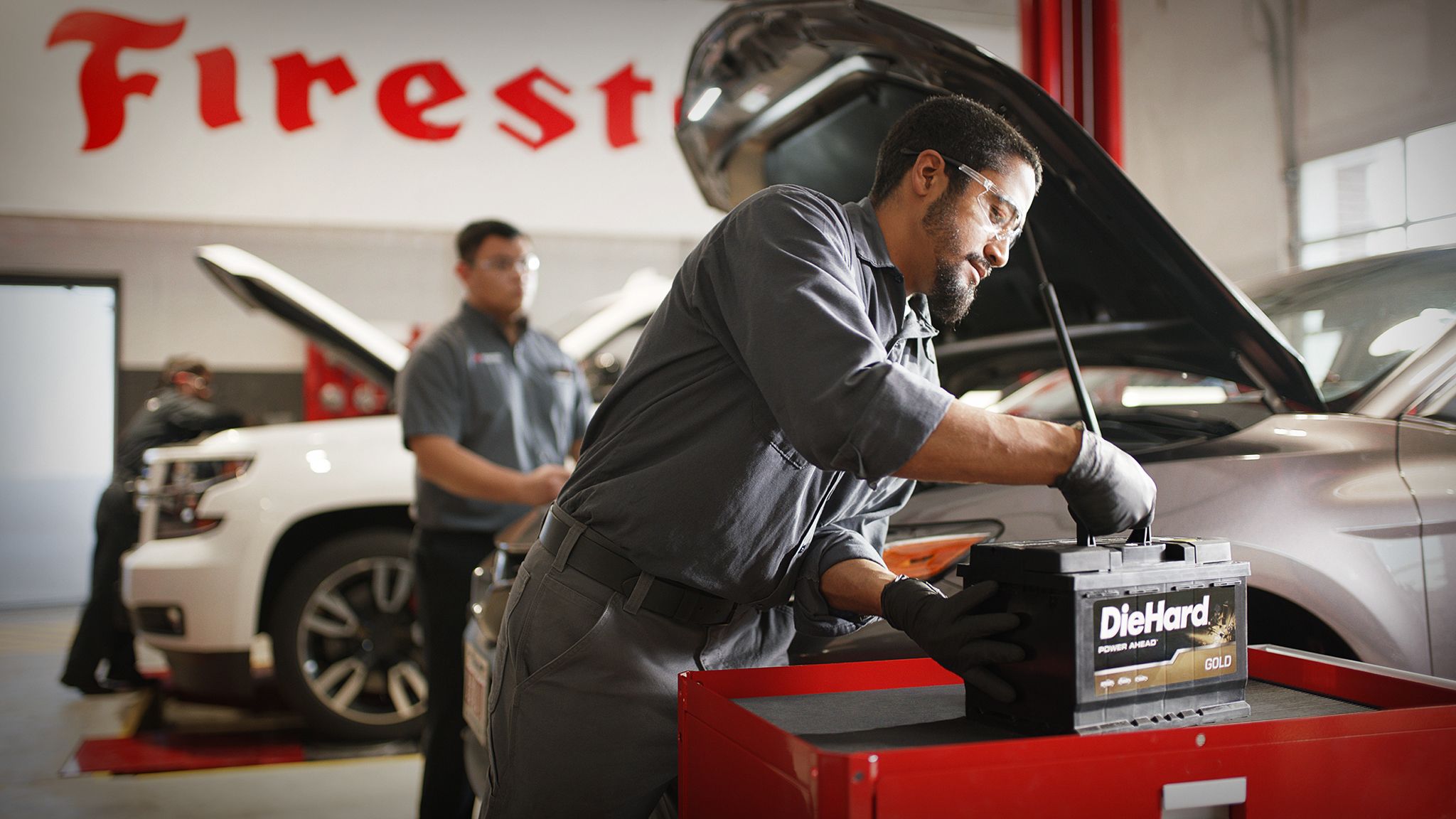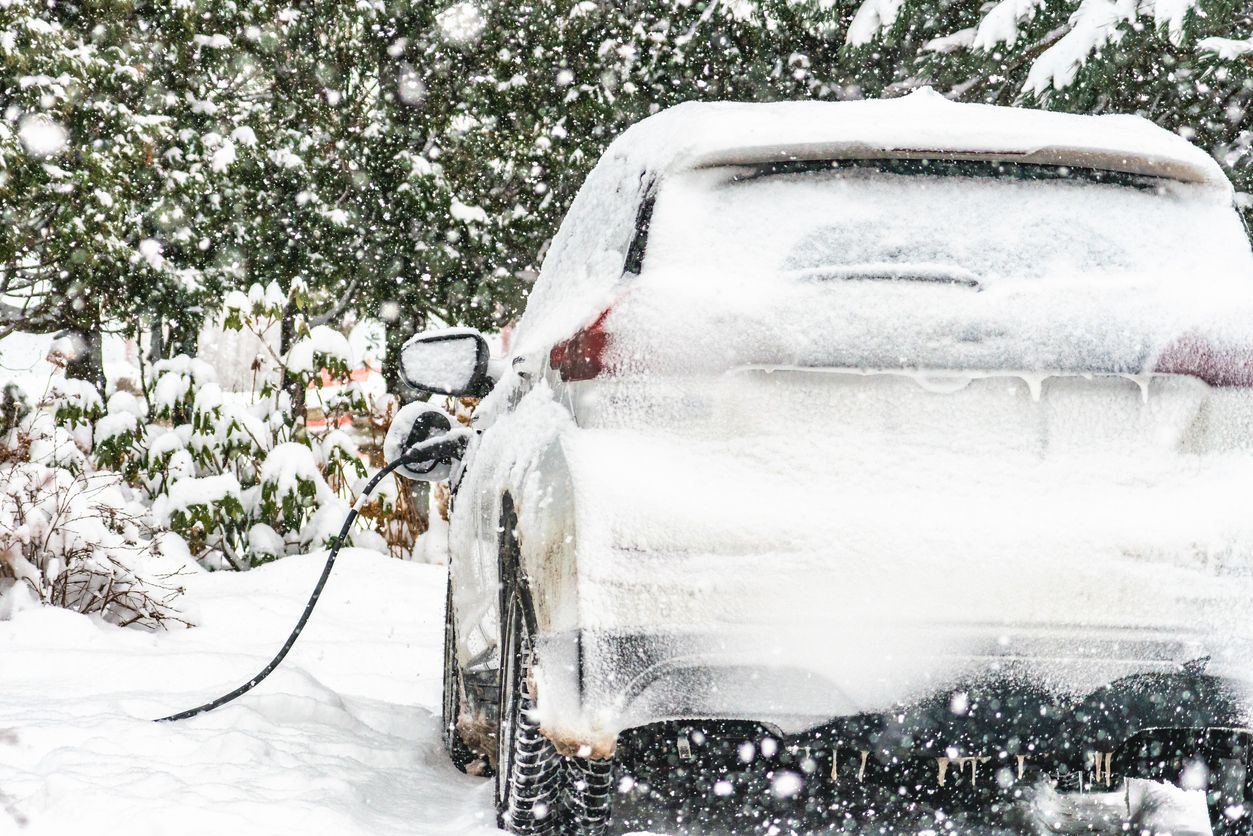The battery is the foundation of your ride — it helps provide the jolt of electricity needed to power all of the electrical components of your vehicle. Understanding your car’s battery isn’t just a matter of automotive curiosity; it’s a necessity to help prevent getting stranded on the side of the road.
We’ll teach you how to spot the symptoms of a bad car battery and answer important questions like, “How does a car battery work?” and “How long do car batteries last?” Read on to learn everything you need to know about car batteries.
How Do Car Batteries Work?
Let’s take a look at how the most common type of car battery — lead acid — works:
The car battery helps provide the jolt of electricity necessary to power all the electrical components in your vehicle. Talk about a pretty huge responsibility. Without battery power, your car, as you’ve probably noticed, won’t start.
Inside car batteries, there are cells comprised of a lead dioxide (PbO2) plate and a lead (Pb) plate. These cells are submerged in sulfuric acid, which creates a chemical reaction between the PbO2 plates and Pb plates. We won’t get too technical here, but through a series of chemical conversions, ions are produced. As these ions move back and forth between the plates, electricity is generated and sent to the terminals on your battery. From there, it can be distributed to the electric system of your vehicle.
One of the disadvantages of this system is that the batteries are filled with a caustic liquid that can leak if the battery is tipped over or cracked. Some standard lead acid batteries may also have to be topped off with deionized or distilled water occasionally.
Absorbent glass mat (AGM) batteries solve these problems by putting glass mat separators within the cells. These separators absorb the sulfuric acid and prevent it from sloshing around. AGM batteries are also typically sealed, which means that you don’t have to worry about topping off your battery’s fluid.
What to Look for When Picking Out a Car Battery
Choosing a car battery can be a bit overwhelming. Cold-cranking amps, group size, reserve capacity — what does it all mean? Let’s break down some of the common terms you’ll run into when buying a battery:
- Battery Group: The first thing you’ll want to consider when picking out a new battery is the battery group — also called the BCI (Battery Council International) group. It determines the dimensions, voltage (6V or 12V), and terminal locations of your battery. To ensure that your battery fits, you’ll want to match your battery group to your specific vehicle’s manufacturer recommendations, which can be found in your owner’s manual.
- Cold Cranking Amps (CCA): If you live in a cold climate, you’ll need to consider CCA. This number is correlated to how well a battery can operate in cold temperatures. The higher the number, the more powerful the starting power of the battery is. Even if you don’t live in a frosty region, looking at CCA may be a good idea, since it’s a decent gauge of the overall starting power of the battery.
- Reserve Capacity: A battery's reserve capacity refers to how long the battery can deliver power to your vehicle without help from the charging system. The larger the reserve capacity, the longer the battery can provide power on its own.
Want to make sure you pick out a good battery? Read up on our current battery deals and specials, and check out our guide to choosing the best battery for your car.
How Long Do Car Batteries Last?
On average, car batteries last about three to five years, but external factors can drastically alter their longevity. Harsh climates, frequent short trips, and parasitic draws may accelerate wear and tear.
You can generally find the manufacturing date of your battery on a sticker on the side or top of your battery. Most date stickers are straightforward, but some use an alphanumeric code. In that case, the first part of the code is key: look for a letter and a digit. Letters are sequentially assigned to each month — A for January, B for February, and so on. The number that follows represents the last number of the year, as in 9 for 2019 and 3 for 2023.
Once your battery turns three years old, it’s a good idea to have it inspected yearly. Fortunately, peace of mind doesn’t have to be expensive. At Firestone Complete Auto Care, we offer a free battery test any time you visit one of our locations.
Don’t have time to stop by one of our stores? Visit our Virtual Battery Tester to get an idea of how much life your battery could still have left.
6 Symptoms of a Bad Car Battery
Even with yearly battery inspections, you’ll want to keep an eye out for indications that your battery is on its last leg. Here are some of the most common symptoms of a failing car battery:
1. Slow Engine Turnover or Clicking
When batteries are low, engine cranking may be sluggish and make a slow "rur rur rur" sound. If your engine doesn’t turn over at all and you hear a clicking when you turn the key, your starter solenoid may be trying to engage, but not have enough power to do so. In either of these cases, your battery is likely dead.
2. Dim Headlights and Electronic Issues
When your battery is failing, it puts a significant amount of load on the alternator. When this happens, headlights may become dim or flicker, and other electronic systems like your radio, power windows, or heated seats may malfunction.
3. Check Engine and Other Indicator Lights
All sorts of strange electrical things can happen when your battery voltage is low. Your engine control unit or module (ECU or ECM) or other modules may pick up on these abnormalities and signal the check engine light to illuminate. Sometimes, failing batteries will even trigger other indicator lights to come on. So, if you know your vehicle is well maintained, but your dashboard indicates that there are issues, or other unlikely errors, it could be due to a bad battery.
4. Low Battery Fluid Level
As we mentioned earlier, you don’t need to worry about filling your battery’s fluid if your vehicle has an AGM battery. But if you have an old-school liquid battery that is not maintenance-free, you should check your battery fluid frequently. You can do so by peeking through the translucent part of its casing or carefully looking under the red and black top caps. If it’s low you might be able to refill it with distilled or deionized water. However, if the fluid level is below the internal lead plates, it’s time to have the battery and charging system tested. When fluid levels drop, it’s typically caused by heat from overcharging and could signal a problem with your alternator.
5. Bloated Battery Case
If your battery looks like your uncle's belly after a holiday meal, it could have a bad cell or have been significantly overcharged. Swollen batteries are bound to fail sooner or later, and should be replaced ASAP.
6. Sulfurous Smell
If you notice a pungent, rotten egg smell around your battery, it’s probably leaking. Leaking batteries should be replaced ASAP. If you replace the battery yourself ensure that you wear personal protection, as battery acid can cause skin and even tissue damage. Leaking batteries can also cause corrosion around your battery posts or terminals, so you’ll want to carefully clean your battery wires off with a wire brush or fine sandpaper before installing a new one. Otherwise, a solid connection may not occur, and your car might not start.
Bad Battery FAQ
Can a Bad Battery Affect the Starter?
You bet. If you have a weak ankle, you tend to overcompensate by putting more weight — and stress — on the healthy ankle. The same concept applies to weak batteries. When your battery starts failing, your starter motor may have to work overtime to get your vehicle to start. On top of having to work longer, your starter can overheat if cranking too long
Pro Tip: Don’t leave your car’s power up to fate — our Electrical System Check makes sure all the necessary parts are working properly. We’ll know right away if any weak parts may need immediate replacement.
Can a Bad Battery Affect the Alternator?
Similar to how bad batteries can affect starters, they can also wreak havoc on your alternator. A battery that isn’t outputting enough voltage may cause your alternator to continuously run at full output. Most alternators are not designed to do this and may overheat — thereby shortening their lifespans.
Why Do Car Batteries Die?
- Time: With enough time, everything deteriorates. The same is true for batteries. After about 3–5 years, the parts inside of your battery will start to degrade, which may result in lower charge capacity and the inability to hold a charge.
- Long Periods of Inactivity: If your car sits for a long time (anywhere from about 6 weeks to 6 months) without being driven, your battery may need to be recharged. Additionally, if car batteries are completely discharged and stay that way for some time, their life expectancy may be permanently reduced.
- Failed Alternators: A dead battery can also be a sign of a failing alternator. If your alternator is going bad, it may not produce enough power to recharge your battery at the rate it is being discharged. This can cause your battery to discharge completely, which might not only leave you stranded on the side of the road but can also harm your battery’s health.
Electrify Your Drive with Firestone Complete Auto Care
Powering your ride is a complex affair. But here’s a straightforward fact: you need a functioning battery to make it go. Ensure that your battery is in top condition with Firestone Complete Auto Care. We offer free battery tests with every visit, and our skilled technicians can help you find the right battery for your vehicle if you need a new one. Schedule your appointment at your local Firestone Complete Auto Care today!



